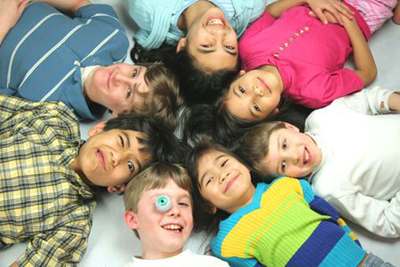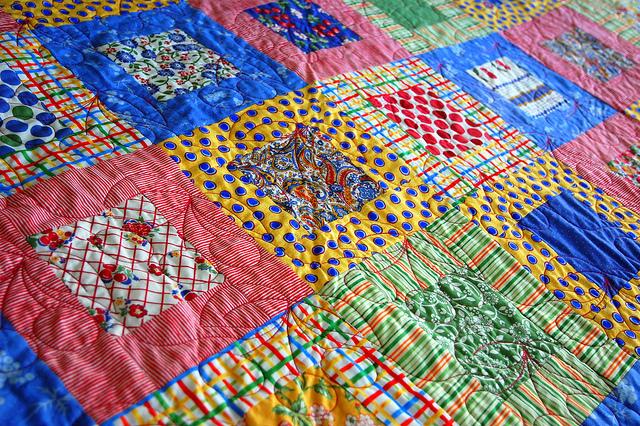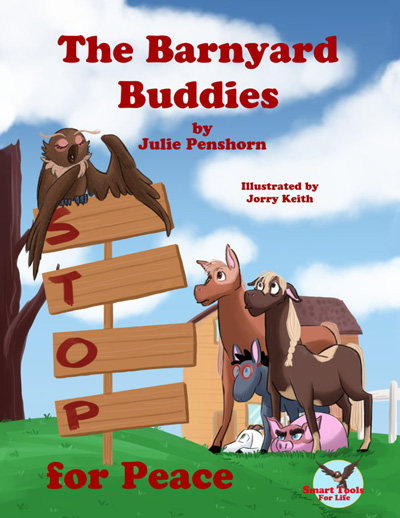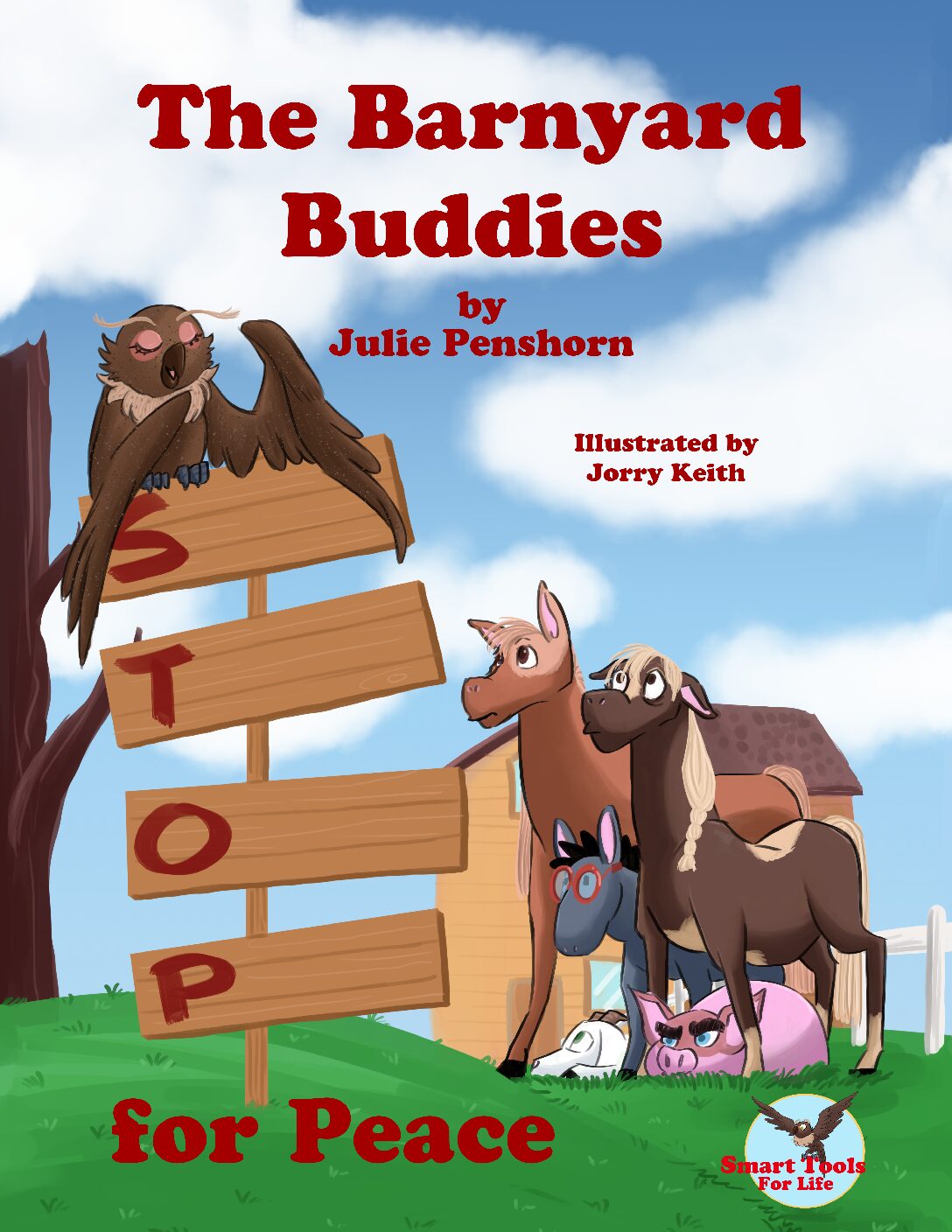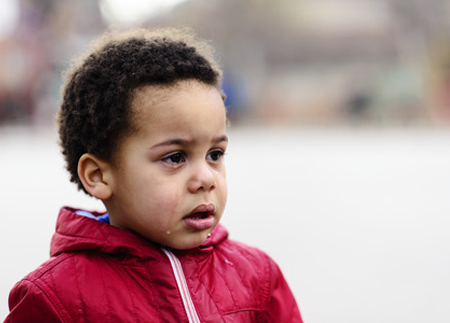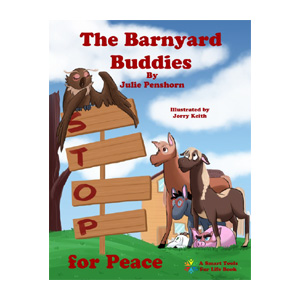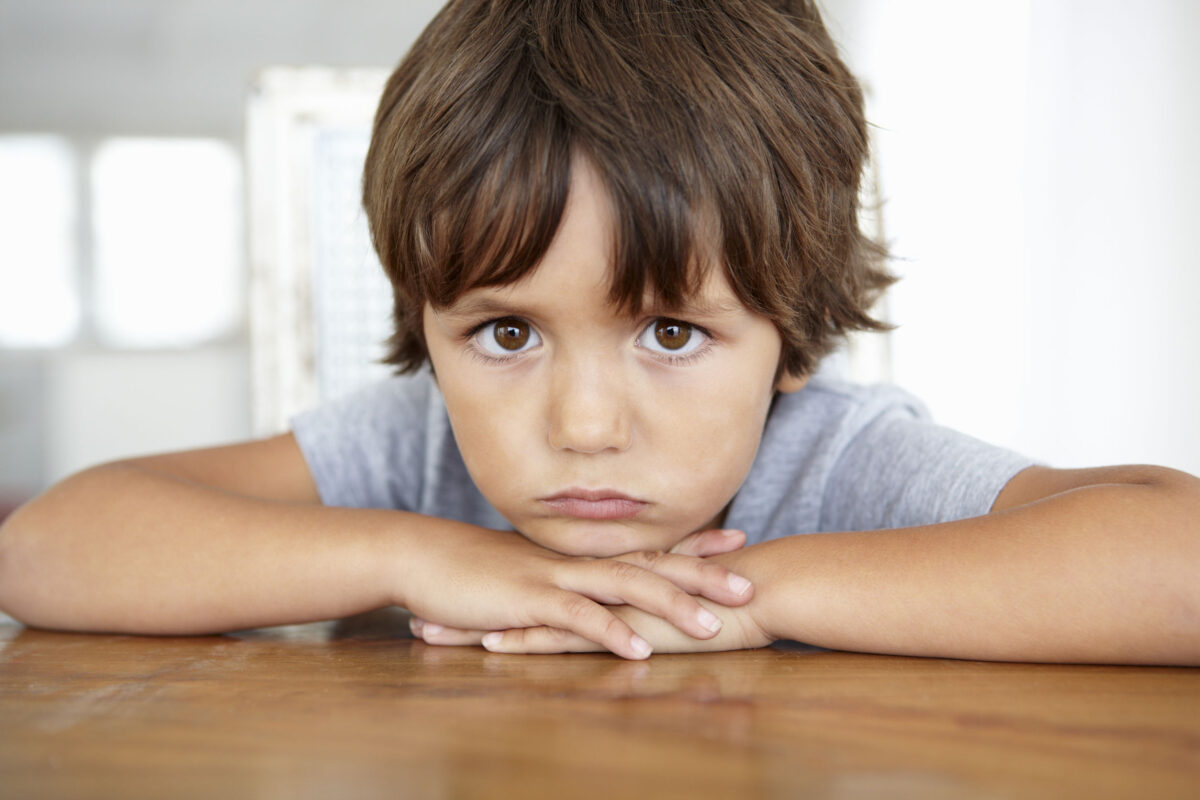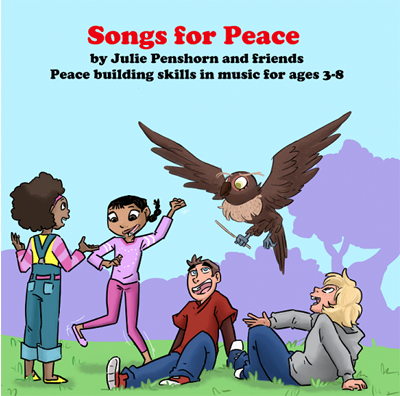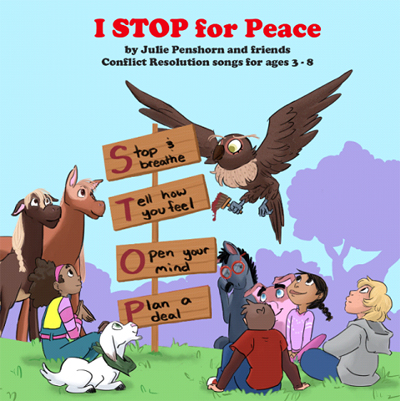Listening is a key to understanding others. It is important for respectful interactions and even success in life. Listening helps us interpret the emotions of others and understand our own, opens doors in problem-solving and conflict resolution, and even helps us in business! As we become more skilled, we can reduce conflicts because we are more intuitive. When compassion and empathy increase, we become more perceptive partners, co-workers, friends and community members, capable of creating peace.
The Problem
The lack of empathy for the “other,” often exacerbated by power posturing and political opportunism, prevents the highly creative solutions found with “radical empathy,” from emerging. Instead, we stick with the same old stubborn behaviors chosen mostly out of habits founded in our own ignorance, hatred, and/or bigotry.
The Solution
Years ago Burt Berlowe, Rebecca Janke, and I wrote The Compassionate Rebel to name, identify and celebrate those whose anger and rebelliousness was rooted in empathy and compassion. These rebels forged highly creative solutions to challenging conditions and/or situations. As we celebrate one of our favorite compassionate rebels, Martin Luther King Junior, it’s a good time to remember that empathy and compassion, woven into the fabric of conflict resolution, have much more power — and lead to more lasting solutions — than bigotry and hatred. Based on mutual respect, deep listening and understanding reveal paths to radically transformed conflicts.
We must start with the children!
The Warmth of Other Suns: The Epic Story of America’s Great Migration by Isabel Wilkerson is a powerful, empathy-building book. Recently interviewed on Krista Tippets’ OnBeing program, she reminds us that we can change the heart of the world “one heart at a time.” She asked a question that made my heart ache, “When a police officer shoots someone and that person is down, why don’t they show empathy? Why don’t they take that person’s hand?” Choked up, I continued to listen as she added, “We all have so much more in common than we have been led to believe.”
Resist Divisiveness
Divisiveness is a construct, based on fear. It’s a contagious disease in our world today. Celebrating our common humanness, through building our skills for compassion and empathy, shows children the way to take the “other’s” hand, to connect in a way that traverses barriers and walls in our hearts and in our neighborhoods. I want tomorrow’s leaders to have those skills.
Below are some “smart tools” for children’s education, as we continue through the steps of conflict resolution in The Barnyard Buddies STOP for Peace children’s book.
The second step of the STOP for Peace conflict resolution process is T-Tell how you feel. A previous blog showed the first step: S-Stop and breathe.
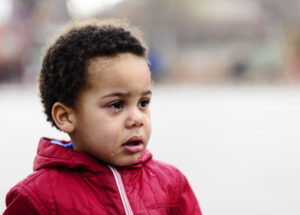
Is anyone listening to me?
Let’s start with a story about kids:
A young boy approached the preschool teacher, while she helped another child get her coat on to go home, and impatiently tugged at her sleeve, “Teacher, Mrs. Sperling!”
“Kevin, remember we practiced how to interrupt me?” Mrs. Sperling handled the impatient youngster masterfully, “You touch my sleeve and then I will smile at you and you’ll know I’m going to help you as soon as I can.”
“But Mrs. Sperling, Alan took all the blocks and I can’t make anything!” persisted the child.
“Kevin, remember what we practiced. I’m looking at you. I see you. Please wait politely.”
Kevin listened! And he did!
Finally, the stubborn zipper she had been wrestling with was tamed, and the teacher turned her attention to the child.
“OK Kevin, I listened, and I hear you have a problem. What more did you want to say?”
“I told you,” was Kevin’s petulant reply.
Peacemaking Skills are Practiced With Children
“We’ve been practicing being peacemakers, remember? What is the first step when you have a problem – do you remember learning it from Mrs. McCloud in The Barnyard Buddies STOP for Peace?” asked Mrs. Sperling.
“Yes, STOP and breathe,” he managed. “But I did that and I still don’t have the blocks!”
“What’s the next step, Kevin? Remember we practiced with the I message cubes?”
“Tell how you feel,” came the hesitant answer. “But Alan won’t listen to my feelings.”
“How do you know that?” asked Mrs. Sperling.
“Because he’s selfish.”
“Maybe he is, or maybe he just needs to hear your feelings or your needs. I’ll watch you try using your peacemaking skills with Alan.”
Using an I-Message Builds Empathy Through Learning Deep Listening
“Alan,” said Kevin, “I feel angry when I don’t have any blocks anymore because I was building something.”
“I know you were angry,” said Alan. “I was going to help you build the airport — with you — but you just walked away!”
“Oh, you wanted to play WITH ME? Oh, okay. Well, pass some blocks over here!”
The two started working together and that was that. Mrs. Sperling didn’t have to intervene.
The Basic Training for Young Peacemakers Can Only Take Place In the Right Circumstances
When the classroom is peaceful and there is no pressing conflict, children and teachers learn and practice the individual skills for conflict resolution. Then it’s much easier to have a rational conversation when a conflict actually occurs. Eventually, the adult isn’t needed at all. Children are perfectly capable of working out their problems independently. Especially when supported by teachers and parents. “Sure, you and Kevin can go over to the peace table to work on your problem. . .” (More on that in the next blog.)
Peacemakers-In-training Need Practice to Develop Independence
In this classroom, the children were “peacemakers-in-training.” The determined teacher had laid the foundation. She was persistent at reminding the children that they learn, and then become experts at, working out their problems on their own. This approach created a classroom community where it was safe to express feelings and empathy. In this environment, conflicts still happened, but all understood the expectations of peaceful resolution.
Conflict Resolution Demands Tenacity
Kevin and Alan’s conflict, like so many, depended on leadership — and some of the other skills that make a great teacher great — like tenacity and charisma. If the teacher solved it for the child, nothing could change. But she spent time laying the groundwork for that exchange! If Kevin walked away without persisting, he would have missed an opportunity for joining in play with Alan. Further, nothing would be learned or resolved. In this case, listening resulted in a close relationship, which is an ideal result.
How We Listen, Show Respect, and Demonstrate Empathy, Determines A Lot About Our Culture
We all want classrooms and homes with less tattling, whining, and bullying. But we also want more. We want to feel we are a vital part of something bigger than ourselves and know that we belong. There is a great feeling of safety provided in a community focused on peace. It provides a structure where our uniqueness and contributions can be fully heard and appreciated.
“Whether children build a world of peace or a world of hatred is as much a result of the choices we as adults make as of the choices they make. Children will build a world using the tools and materials we provide them with, so let us choose to share with them the ways of peace.” Dr. Wangari Maath.
Develop the Classroom Community Intentionally
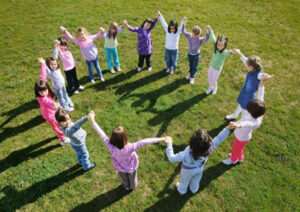
Developing classroom community
There is too much at stake not to take the time necessary to develop community in our families and classrooms. Where peaceful conflict resolution is the norm, power-play behavior that is rooted in disrespect and manipulation is not.
The Listener Gets Ahead!
Today, the “peace literate” person with the most highly developed social skills, especially skills for empathetic listening (which leads to intuitive understanding), is the one who is going to be successful at leading, influencing, serving and getting along with others. That person recognizes that NOW is the time to seek solutions that are good for me, good for others and good for the planet. There is no other way for us to thrive; there is no other way to teach our children!
The Exhausted Parent Story
I watched a conflict between two young girls riding behind an exhausted parent driving down a snowy road. But that parent, with dance practice, dinner-making, her phone, job, computer, and TV to provide disruptions hadn’t found time to spend on the actual coaching needed for this conflict to resolve as simply as it did in the classroom example above.
But What’s a Parent to Do?
Her solution was, “Behave children or I’ll call your father!” Such an admonition is likely to fall on deaf ears! If one child is clearly interested in grabbing attention or disruption for the sake of some self-interest, adult “guidance” is unappreciated by that child at that time.
How Can We Address These Complicated Situations?
Often teachers believe their job is insurmountable without parental assistance. They may feel expected to do all the work of social and emotional learning in school, yet they have so many other requirements. Meanwhile, parents tear out their hair and don’t feel qualified.
Ask Grandma for Child-Rearing help?
Grandma may not have suggestions for you! Though John Rosemond asserts that she’s the one with the answers in his thought-provoking book, he didn’t talk to my grandma! She thought that the world had changed so much that her ways were no longer valid. In fact, I, along with many other parents, was quite overwhelmed as a young mother. And with the day to day rushing around of trying to make a living and being there for my child, I didn’t have much left at bedtime to give the topic enough study! Thankfully, I did learn some important skills from my son’s preschool teacher, Rebecca Janke, M.Ed.
Schools and Preschools Can Help Lead Parents to Succeed
If both preschools and early elementary schools provide this important learning for the children, parents are often delighted! They happily participate at home by continuing the learning with short take-home activities and suggestions. When everyone is on the same page, success is much more likely. For my Master’s Degree in Business Communications, I did a research study on parent’s opinions of the value of a peace education curriculum in their child’s preschool. Interestingly, most were even willing to pay more to have it.
How about a Kids’ Music and Drama show so parents have an opportunity to listen and learn?

Children can sing, dance, demonstrate peacemaking skills
We highly encourage providing children opportunities to show off their learning with a dramatization. With the available music, a music and drama show is a wonderful way to educate the entire community as the children, their parents and others attend the show.
The second step in the STOP for Peace conflict resolution process is T – Tell how you feel
This step can only be attempted after all parties have remembered to do step S – STOP and breathe, and have calmed down. “Tell how you feel” is where we get down to the nitty-gritty of the problem!
Here are specific smart tools for creating a culture of peace through listening and expressing feelings
This section is included With Purchase of the I-Message cubes.

I-message cubes for conflict resolution
The I-Message Cubes are so good for learning to listen and communicate through an I-message! By engaging the children in games, the learning is easy. However, even without the cubes, many of the following activities are possible. If you don’t have cubes, start by cutting out magazine faces of people or children showing different emotions. Label them. Here’s information about the cubes and how to use them. They work well with classroom communities, but families can have a lot of fun with the cubes too. You’ll notice the complexity of the exercises increases as you go through the games and activities. Younger children may not be able to learn all the more advanced sentences and skills.
I-Message Cubes: There are four cubes in a set, available here. The feelings depicted on the orange cubes are generally recognized as positive and the blue cubes have feelings that are generally recognized as negative. Then, there is an orange cube with scenarios depicted that are generally considered pleasant and a blue cube with unpleasant times. The exercises below start with just the feelings faces cube in orange and blue. The scenarios come later.
- Start with the orange faces cube and show one face at a time, naming the feelings on all six sides. The feelings depicted are happy, joyful, excited, loving, surprised and peaceful. Go back to the first face and ask the children to show that feeling with their bodies. Celebrate their attempts. Repeat until all six sides have been explored.
- Do it now with the blue faces cubes. Those feelings are hurt, scared, angry, frustrated, sad and lonely.
- Do the same steps but have child/ren pretend to be a certain animal with a particular feeling.
- Again, do the same steps but now child/ren pretend to be another member of their family.
- Another day children draw a picture of a time they felt “excited.” They draw a picture for the peace journal or a feelings book. Another day they draw a time they were “sad” and so on until all the feelings of the cubes have been explored.
- Children can cut out pictures of people showing different feeling and make a feelings “chapter book” with a few pages for each feeling.
Then demonstrate how to use the cubes in the scenarios
This series of activities is designed to focus on positive experiences through role play while developing listening skills and cooperation and building community. It also allows the adult to know the children better (because their interpretations of the art will be directly related to their personal experiences). Children learn to talk about themselves in positive ways and celebrate what is going well.
Adaptations for Those who Don’t have Cubes
Bring in some pictures of scenes for this activity. Scenes like children planting a tree, having a book read to them, going to Grandma’s house, someone bringing another child a gift, playing ball or another game together, and so on. For the not-so-great times, you can find illustrations or pictures of conflicts, pollution, sickness, someone wrecking another child’s work, parent ignoring a child, and so on. Here are two of the pictures from the cubes. You have permission to print them out to use.

Boys in conflict over toys can cause injury.

Conflict happens! Skills are needed.
- Hold up the orange cube or your picture showing one scenario. Tell a little story about the scenario by starting with, “This picture reminds me of the time. . .” Pass it to a few children and ask, “What do you think is happening?”
- Continue in this manner until all pictures have been explored.
- Roll the cube or choose a scenario. Ask the number of children needed, to act out that scenario in the middle of the circle.
- Ask the other children what feeling/s they see being acted out.
- Take turns rolling the cube and doing role plays for the various depicted scenarios.
Empathy building is key
Use the blue scenario cube. This game helps children learn to respond with empathy to someone’s problem and find alternative points-of-view when an uncomfortable situation occurs.
- Hold up the blue scenario cube showing one uncomfortable scene. Have children tell what they think is happening and how they would feel if that happened to them. Rather than acting out the scenario the children can brainstorm some caring activities that could be done instead. Complete until all sides have been explored.
- Read a story and ask if various characters are peacemakers. If not, children are invited to become “peace authors” and recreate the story by drawing pictures and telling a new story to the adult. The adult can write down the children’s drawn alternative. If children are writing they can get more elaborate. Remember, we are collecting children’s stories of ways they were peacemakers here on this website. This might be an opportunity for your child/ren to share their story.
Learning the skills for I-Messages
This game provides visual cues to develop children’s ability to say an I-message when feeling uncomfortable, encourages alternatives to violence, and teaches communicating without attacking or blaming. It also teaches that uncomfortable feelings are okay to talk about and gives children an opportunity to express uncomfortable feelings in a safe place. After children master these skills, celebrate that they now know how to use words instead of fists when uncomfortable feelings arise.
- Start by saying the words, “I feel,” and then rolling the blue faces cube, and naming the feeling that comes up on the top of the cube. So, “I feel lonely.” Then roll the other like-colored cube and describe the scene you see: “When someone is reading the paper and won’t pay attention to me.” Notice the words do not include the blaming use of “you” nor do they name anyone. So, instead of “I feel lonely when Dad is reading the paper and won’t put me on his lap,” encourage something more like the previous sentence. By using both the orange and the blue cubes children get the idea that their feelings are wide-ranging and become much more competent at expressing them.
- The children take turns rolling the cubes and practicing their I-messages.
- When they have mastered the concept in the abstract, go on to specific I-messages for times of trouble when there is no conflict. For example, have the children practice an experimental problem. “Children, if someone has all the crayons and you can’t have any, how do you feel?” Record their I-messages. Then, “If you are the one with all the crayons, how do you feel?” Most often when children won’t share there is some underlying reason. See if you can gain a deeper understanding by listening during this exercise. Then, when the problem comes up you have history to refer to: “Remember when we talked about sharing and other children said they felt sad when someone wouldn’t share? I am sure you don’t want Kyle to feel sad. What feeling keeps you from sharing today, Jessica?” Persist a bit through the “I don’t know.” Use the cubes to prompt her. “Do you feel like this person? Or this?” and so on.
- If a child can’t go to I-messages it’s often because they are still too emotionally charged. They may need more time to cool off. Without a tone of punishment, offer a way for the child to get that need met. “Do you need more time to cool off and breathe?” “I know you want to work this out and be a peacemaker. When do you think you’ll be ready to say how you feel?” (But don’t forget to get back to it because conflict avoidance is not a good habit.)
- Eventually, many children can demonstrate the deep listening skill of repeating what the speaker has said, “Oh, you feel lonely when no one plays with you?’ This is a wonderful addition to any communications.
- Children draw their own scenarios to make new cubes or cover the blue and orange ones in this set!
Time to Celebrate!
Now that the children have the skills for two important pieces of the conflict resolution process, celebrate their learning! Ask them how they want to celebrate.
Another Approach: The “I-Need” Message
In some situations, I-messages are not the right tool. When there is a power imbalance or a big age difference, or when people really don’t care how you feel, another skill is needed. The “I-Need” statement is a separate skill set for children to learn when they are not in a compassionate community. Here’s a great article on that from Kristin Stuart Valdes http://www.morningsidecenter.org/blog/i-need-message. However, in many settings, it is I-messages that can be used.
If you liked this article, please support our work by contributing to our I STOP for Peace campaign at this link. Please like, and please share!
Our upcoming book, I Can See Peace takes empathy and compassion to an even deeper level as it explores ways for children to intentionally and mindfully seek peace. This article from Time.com will give you a glimpse into the importance of that new book. Watch for it soon!
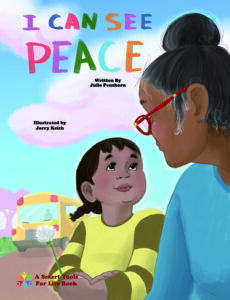
I Can See Peace book cover


